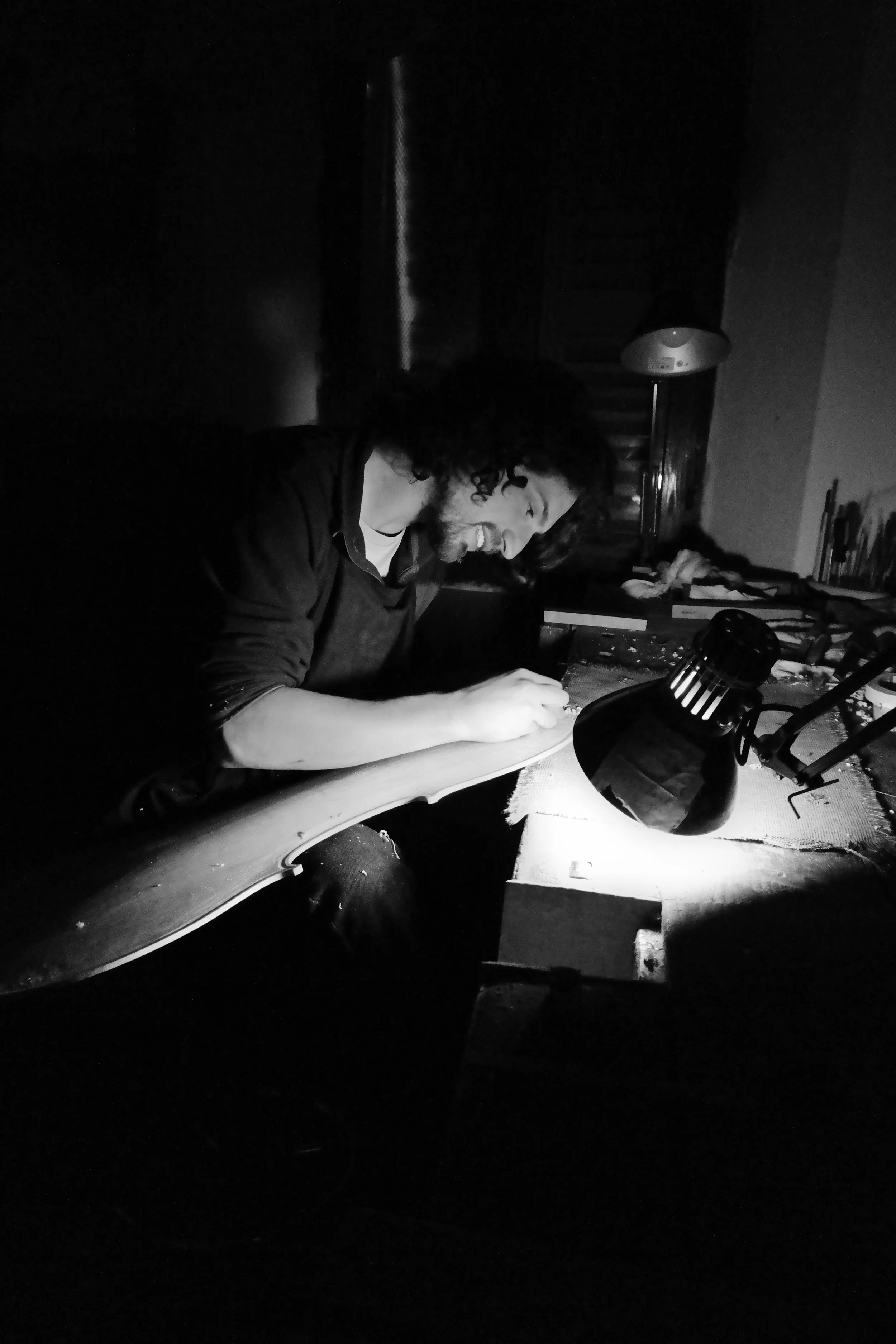
violin maker - teacher
sound adjustment - restoration - consultation
My instruments are my greatest teachers and pupils. While making an instrument, I shape the wood to become the best version of itself. In the process, I also learn from them a sense of balance, peace, humility, and love.
My life as a maker began in my hometown of Jerusalem, where I met Shlomo Moyal, master violin maker and restorer. As a young man entering his workshop, I was enchanted — aromatic wood shavings, fine instruments, and stories of “Cremona, Cremona, Cremona…the city of violin making…” He was the first to tell me that there are many places around the world where one can learn to make a violin, but only one place in the world where one can live violin making.
I went to Cremona, Italy to see for myself. He was right, and four years later I graduated from the Scuola Internazionale di Liuteria Cremona “Antonio Stradivari” (the Cremona International Violin Making School), with emphases on the Construction of Modern Bowed Instruments and Maintenance and Repair. I had the honor of learning from many maestros, especially Massimo Negroni. I also like to think that I picked up an additional education in Italian food appreciation!
I remained in Cremona for two more years, to apprentice and to teach at a private violin-making school, the Academia Cremonensis, where I helped novice and amateur luthiers reach the next level in their making.
Today I’m fortunate enough to live in Hilo, Hawaiʻi where I continue to make high-end instruments in the Cremonese tradition. I also offer repairs, restoration and sound adjustments for all bowed instruments. Every musician deserves to have their instrument in the best condition possible, as for sound and playability.
When I’m not near the workbench, I am playing with my daughter at the park or beach. Hiking or scuba diving with my wife Lillian, absorbing inspiration from nature. . Attend concerts at the Hawaiʻi Symphony Orchestra and occasional chamber music events.
I strive to live a continuous life which respect the environment. Sustainability by using responsibly sourced materials, and powering my workshop with the power of the sun.
Teaching about violin making in my workshop back in Cremona 2015
Ponchielli Theatre, Cremona
https://www.teatroponchielli.it/

My Philosophy
The 21st century is considered to be the new golden age of violin making. New research helps makers better understand the complex mechanisms underlying quality sound. Modern times also bring new machinery (see my FAQ about industrial violin making).
Making
For me, the making of an instrument is a balance between great craftsmanship and the art of “wood interpretation.” Having learned from the old Cremonese traditions, I recognize the value of making instruments as close as possible (within reason) to the way they were made more than 300 years ago. However, my work is not to copy the past, but to learn, understand, and apply the lessons of the past to the present. I take the time to get to know the wood I am shaping, in order to maximize its potential toward the desired sound. Therefore, each of my instruments is handmade, unique, and sounding its best.
Teaching Musicians
Unfortunately, many musicians find themselves with an instrument that doesn’t play well, that isn’t comfortable to play, or that has an unpleasant buzz/wolf. When a customer entrusts me with their instrument, my goal is not only to fix it to the musician’s needs, but to make sure that they learn what I do to their instrument and why I do it. Helping musicians understand the needs of their instrument will help them to maintain a healthier, happier instrument and to know when to visit their friendly luthier for a checkup!
Interpreting Sound
As a musician, can you put your finger on the sound you want from your instrument? Here is a list of terms used to describe sound, many of which exist on a spectrum as part of a larger, more complex equation:
Timber: “X factor” Responsiveness: “Y Factor”
Dark - Bright Loud - Mellow
Warm - Cold Fast - Slow
Round - Sharp Direct - Indirect
Nasal - Oral
Bass - Treble
Wood - Metallic
All of these and more are accounted for during the making process. Once making is complete, small adjustments in the setup can further manipulate the sound to better match the musician’s needs and environment (temperature, humidity, etc.).
An Experiment
I took two of my violins: a Stradivari model and a Guarneri model, each with a distinguishably different sound on the spectrums listed above.
I went to two locations: the Israeli Philharmonic Orchestra in Tel Aviv and the Academy of Music in Jerusalem.
In both locations, different violinists of the highest level tried the instruments and were asked to choose which one they preferred and why. Ninety percent of Philharmonic violinists chose differently from the students and teachers at the Academy.
I conducted the same experiment with the same instruments in the United States, comparing among musicians and shops on the east vs. west coasts. Again, there was consensus…on liking the opposite sound.
Every time a musician plays on an instrument I’ve made, I ask “What would you have liked to have more from this instrument?” When the answer is more time with the instrument, I know I’m on the right track!



